Contents
Guide
Page List

ALSO BY JOHN TULLOCK

Succulents at Home
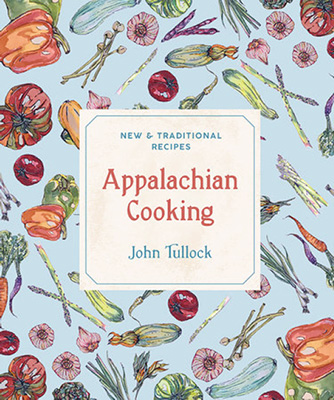
Appalachian Cooking
Grow Food at Home
Simple Methods for Small Spaces
 Veggies, Fruits, and Herbs
Veggies, Fruits, and Herbs 
to Grow in the Kitchen,
on the Patio, or in the Garden
JOHN TULLOCK


Contents

Unparalleled freshness, maximum nutrition, and outstanding flavor comprise the top three reasons to grow food at home. In addition, growing food saves energy, reduces our dependence on fossil fuels, conserves water, promotes ecological diversity, and protects local landscapes from development. A diet rich in fruits and vegetablesan invariable result of home food gardeningcontributes to good health. Unsurprisingly, millions of Americans are growing at least some food at home.
Growing Without a Garden
Although certainly many people garden the traditional way, todays home food gardener does not need a plot of land. Technology, including advanced artificial lighting systems, hydroponic and other soil-free methods, and compact growing systems for patio and balcony spaces, enables even apartment dwellers to grow food. Achieving self-sufficiency from your windowsill or balcony is likely impossible, but you can produce some high-value, intensively cultivated crops all season long. The quality of your homegrown produce will also likely exceed the best available in the market. As an added benefit, you will be able to grow crop varieties that seldom show up on grocery shelves.
A garden in any location in the United States can produce a variety of vegetables, though local conditions will determine which vegetables do best outdoors in any given spot and how much effort must be invested to grow them successfully. Where I live, the growing season is long, rainfall is reliable and abundant, and the list of potential crops is extensive. Local conditions vary widely across the country. Keeping that in mind, you can decide for yourself how easy growing a particular plant outdoors will be in your individual circumstances. Where summers are cool, tropical vegetables such as okra seldom succeed. On the other hand, in the Deep South lettuce production is limited to the winter months because it cannot handle the heat of a southern summer.

Kale Dwarf
Most people will find it difficult to produce all the vegetables they may want to eat in an outdoor garden, regardless of its location. My advice is to focus on what will grow well and dont attempt to cultivate a crop that is not suitable for your climate; even if it survives, productivity is likely to be low. For crops that grow well where you live, but for which you lack room, look to your local farmers market. Corn, sweet potatoes, broccoli, cauliflower, cabbage, garlic, storage onions, and tree fruits typically require more space than you may have available. The suggestions for outdoor growing in beds assume you have about 16 square feet of growing space, a 4-by-4-foot plot or raised bed.
Gardening in containers outdoors can be highly rewarding. Thanks to plant-breeding efforts that create vegetable varieties adapted to container cultivation, some container crops can actually be of higher quality than the equivalent crop planted in the ground. Herbs, edible flowers, and strawberries all have a long tradition of container cultivation. Witness the strawberry jar found in nearly every garden center.
Indoor production opens up additional possibilities for homegrown food, mainly because you can easily control the temperature. A planter in front of a sunny window can supply fresh herbs and edible flowers year-round. Dwarf tomatoes take up no more space than a potted palm, although they require considerably more light. Unconstrained by climate or even cloudiness, the indoor grower can produce an abundance of food under artificial lighting. Further, by using hydroponic techniques, the need for soil is eliminated and plants grow faster and more robustly than with traditional horticulture.
Vegetable gardening has superseded ornamental gardening as a pastime for Americans who devote some of their time to a garden. Food gardening has enjoyed renewed popularity, and hyperlocal cuisine is the new buzzword for chefs. In some cases, chefs creations include ingredients grown, at least in part, on the premises of the restaurant. This invariably involves container and raised bed gardening. Only a relatively small percentage of farm-to-table restaurants have actual farms, but many have potted herbs or a rooftop raised bed garden. And as concerns over the fate of the planetary ecosystem grow ever more dire, some of us view home food production as among the more sustainable pathways to a better future. Regardless of your personal motivation to grow food at home, know that your goals are shared by an ever-increasing number of your fellow citizens.
How to Use this Book
This book is not intended to be a comprehensive guide to home food production. If you have room for an outdoor food garden of 100 square feet or larger, you can produce a substantial portion of the vegetables your family consumes, depending upon the climate in your location. On the other hand, folks with only a sunny window or balcony can also grow a portion of the familys food, though not likely the majority, by using one or a combination of techniques described here. I have chosen to limit suggestions for outdoor growing to crops that will succeed in a very small plot of 16 square feet. The watchword for small space gardening is efficiency. Maximizing the space you have available means choosing to grow vegetables and other edible crops that lend themselves to confinement, as opposed to trying to grow anything and everything in cramped quarters. For example, the same space that produces two or three ears of sweet corn can produce 50 pounds of ripe tomatoes. It makes more sense to grow the tomatoes, and to purchase sweet corn at the farmers market.
As a general rule, even gardeners with considerable space available will likely not be able to satisfy their households need for grains, pulses, and other crops that demand a lot of room. If you are only going to produce a pound or two of dried beans, why bother, when other choices, for example basil, will reward you with more than you may be able to use from the same amount of growing space? Accordingly, I do not discuss these crops here.




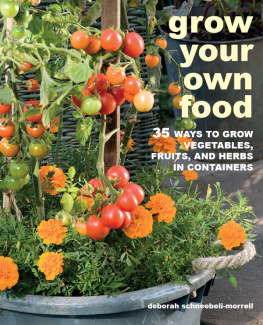
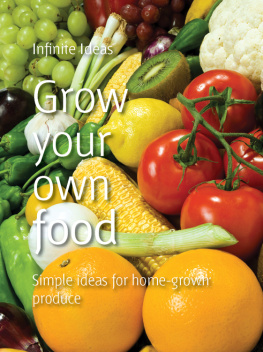
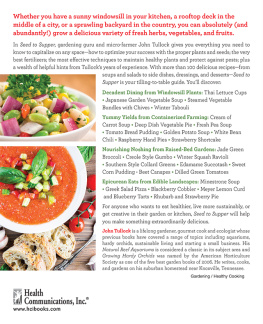
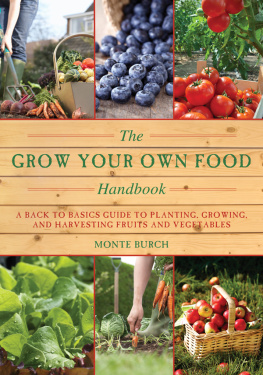
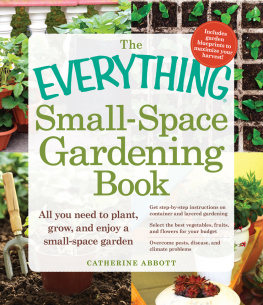



 Veggies, Fruits, and Herbs
Veggies, Fruits, and Herbs 



